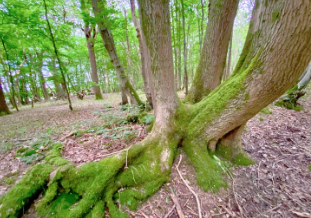
What if we treated the act of learning with the same precision that surgeons bring to an operation? Just as anatomy revolutionised medicine, could neuroscience do the same for education?Understanding how the brain learns—and how it struggles—can transform teaching from guesswork into something much more powerful and informed. In this post, we will explore how insights from neuroscience can shape education, just as anatomical knowledge underpins modern medical practice.
Why Neuroscience Matters in the Classroom
Integrating neuroscience findings into educational practice can enhance teaching effectiveness and student outcomes. Both education and medicine benefit from a deep understanding of underlying systems—whether they’re neural pathways or blood vessels. The more we understand how learning happens in the brain, the better we can support it in the classroom, empowering educators with practical strategies
1. Understanding Learning Mechanisms
Anatomy shows us how the body’s systems function; neuroscience shows us how memory, attention, and reasoning work in the brain.
This matters for teachers. Techniques that reinforce memory—like repetition, retrieval practice, and emotional engagement—have strengthened learning (Baker, 2019). It is not just about what we teach, but how we help students *remember* it.
2. Teaching to the Brain’s Developmental Stages
Just as anatomy helps doctors understand physical growth, neuroscience helps educators understand mental and emotional development.
For instance, we now know that the brain’s executive function (responsible for planning, focus, and self-control) matures well into the teenage years (Berk, 2020). This knowledge can help educators adapt expectations, offer more age-appropriate challenges, and be more forgiving of adolescent forgetfulness or impulsivity.
3. Supporting Learning Differences
In medicine, anatomy helps identify conditions like a heart murmur or scoliosis. In education, neuroscience helps us understand dyslexia, ADHD, and autism—not as misbehaviour, but as differences in brain wiring (Shaywitz, 2003).
This shift in perspective from blame to support is crucial. Students once labelled “difficult” are now better understood and can be helped through targeted interventions, fostering a more empathetic and understanding learning environment.
4. Evidence-Based Teaching Practices
Doctors rely on evidence to guide treatment; teachers should, too. Neuroscience supports teaching methods like
These techniques significantly boost long-term learning (Roediger & Butler, 2011). Moreover, they outperform outdated ideas—like the persistent myth of “learning styles”—that still linger in some classrooms.
5. Shaping Policy, Not Just Practice
Medical knowledge shapes public health policies. Neuroscience can do the same for education. For example
Neuroscience offers classroom-level insights and powerful arguments for rethinking school structure (Wong et al., 2019).
6. Brains and Bodies: A Shared Logic
In many ways, education today is where medicine was a century ago—still catching up to science. However, change is coming.
Neuroscience will not replace the art of teaching more than anatomy will replace bedside manner. However, it provides a framework for more intelligent, responsive, and empathetic practice. It gives us a map—not to dictate every move but to guide us when the path is unclear.
Insights
Teaching aligns with how the brain stores and retrieves information more effectively.
Recognising neurological diversity leads to more compassionate and effective teaching.
Instruction should be timed and structured to match students’ cognitive development.
Let go of myths. Lean into what the brain science shows.
Good education policy should be biologically informed, not just politically convenient.
Want to Go Deeper?
Here are the studies and sources that shaped this post:
Baker, R. S. (2019). *The Role of Neuroscience in Learning and Education*. *Educational Psychologist*, 54(2), 65–77.
Berk, L. E. (2020). *Development Through the Life Span*. Pearson Education.
Shaywitz, S. E. (2003). *Overcoming Dyslexia*. Knopf.
Roediger, H. L., & Butler, A. C. (2011). *The Critical Role of Retrieval Practice in Long-Term Retention*. *Trends in Cognitive Sciences*, 15(1), 20–27.
Wong, T., Wong, D., & Meyer, R. (2019). *Sleep and Learning: A Review of the Evidence*. *Educational Psychology Review*, 31(4), 901–913.
Final Thought
The more we understand the brain, the better we can teach. Neuroscience is not just another buzzword but a bridge between science and the art of education. Moreover, that bridge is worth building.

